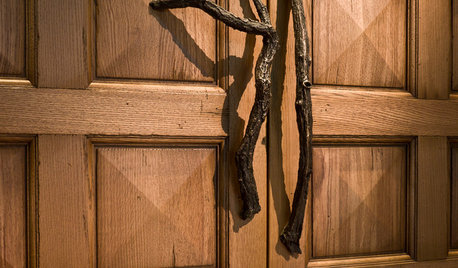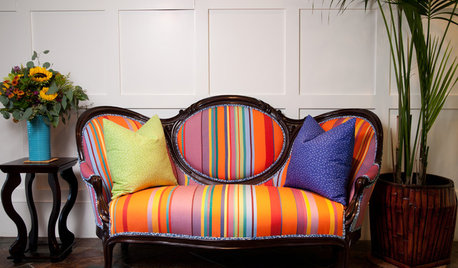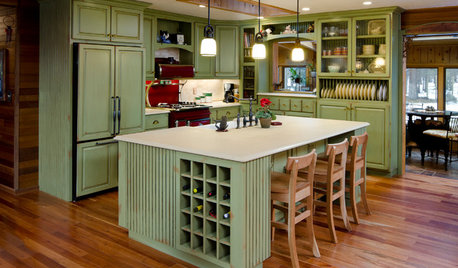Refinishing old red oak floors with carpet glue
jeffcat
12 years ago
Related Stories

GREAT HOME PROJECTSWhat to Know Before Refinishing Your Floors
Learn costs and other important details about renewing a hardwood floor — and the one mistake you should avoid
Full Story
WOODWoodipedia: Make a Solid Choice With Oak
Forget those low-end products of old. Red and white oak today are beautiful, versatile and relatively inexpensive
Full Story
REMODELING GUIDES11 Reasons to Love Wall-to-Wall Carpeting Again
Is it time to kick the hard stuff? Your feet, wallet and downstairs neighbors may be nodding
Full Story
REMODELING GUIDESYour Floor: An Introduction to Solid-Plank Wood Floors
Get the Pros and Cons of Oak, Ash, Pine, Maple and Solid Bamboo
Full Story
UPHOLSTERYThe Perks and Perils of Reupholstering Old Furniture
Secondhand upholstered pieces can add character to a room, but beware of bugs, snakes and hidden costs
Full Story
HOUSEKEEPINGOut, Darn Spot! Tips for Removing Carpet Stains
Know the right solutions and when to use them to prevent stains from pets, soda, chocolate, blood and more
Full Story
MOST POPULARHow to Reface Your Old Kitchen Cabinets
Find out what’s involved in updating your cabinets by refinishing or replacing doors and drawers
Full Story
FLOORS10 Ways to Make the Most of Your Home’s Original Floors
Save yourself the cost of replacing your old floorboards with these tips for a new finish
Full Story
HOUZZ TOURSMy Houzz: Bold Wallpaper Kicks Up a Century-Old Craftsman
Design risks pay off in a Seattle bungalow that combines fearless patterns with subtler colors and a sophisticated practicality
Full Story
HOUZZ TOURSMy Houzz: Old-World European Flair in Oregon
Custom woodwork, stained glass and Arts and Crafts touches create warm, earthy interiors in a ranch-style home
Full StoryMore Discussions











columbusguy1
Christopher Nelson Wallcovering and Painting
Related Professionals
Amherst Kitchen & Bathroom Designers · Carlisle Kitchen & Bathroom Designers · Fresno Kitchen & Bathroom Designers · Grafton Kitchen & Bathroom Designers · Riviera Beach Kitchen & Bathroom Designers · West Virginia Kitchen & Bathroom Designers · Eagle Mountain Kitchen & Bathroom Remodelers · Jacksonville Kitchen & Bathroom Remodelers · Kuna Kitchen & Bathroom Remodelers · Lyons Kitchen & Bathroom Remodelers · Rancho Palos Verdes Kitchen & Bathroom Remodelers · Princeton Kitchen & Bathroom Remodelers · Carney Architects & Building Designers · North Chicago Architects & Building Designers · Spring Valley Architects & Building Designersslateberry
sombreuil_mongrel
brickeyee
ks_toolgirl
brickeyee
John Tebbs
brickeyee
Fori
jeffcatOriginal Author
brickeyee
jeffcatOriginal Author
ks_toolgirl
brickeyee
sautesmom Sacramento